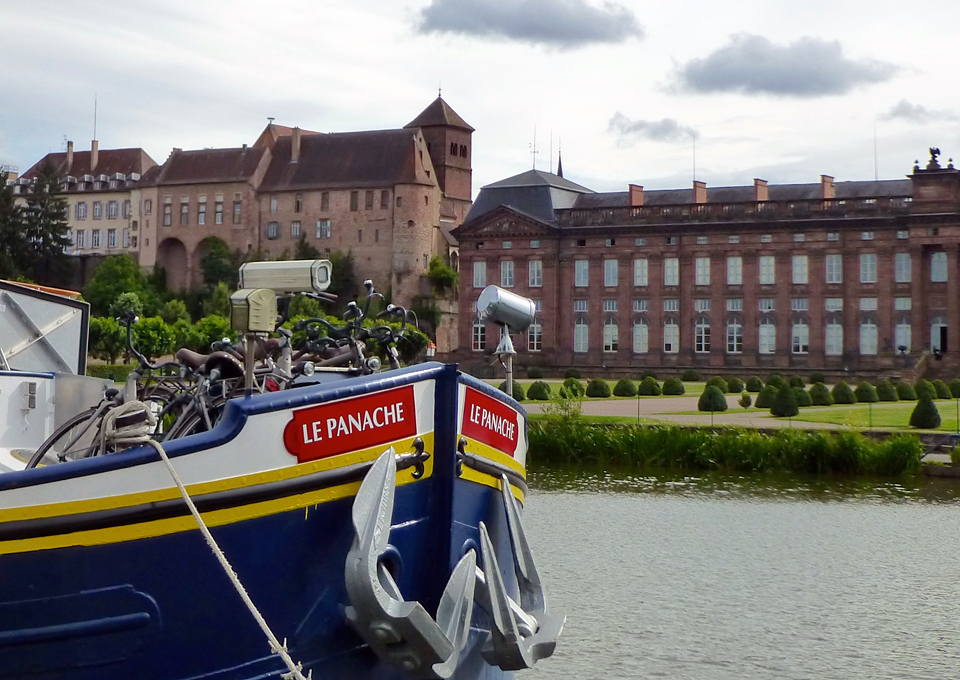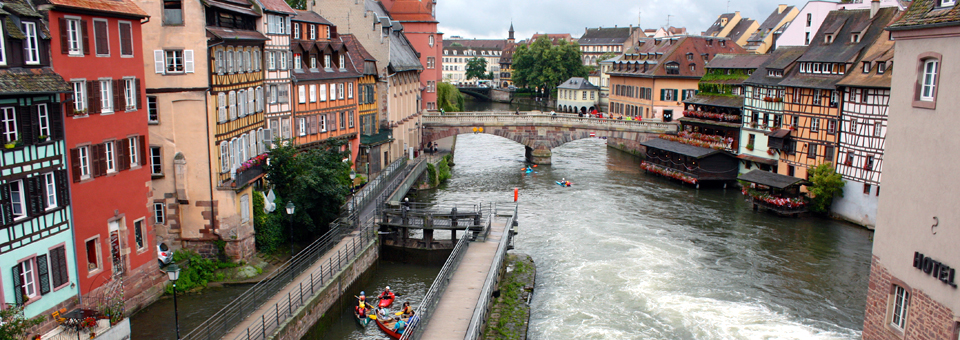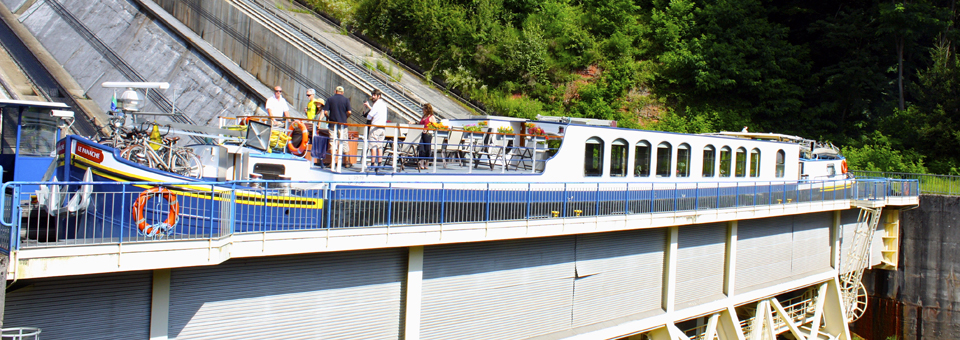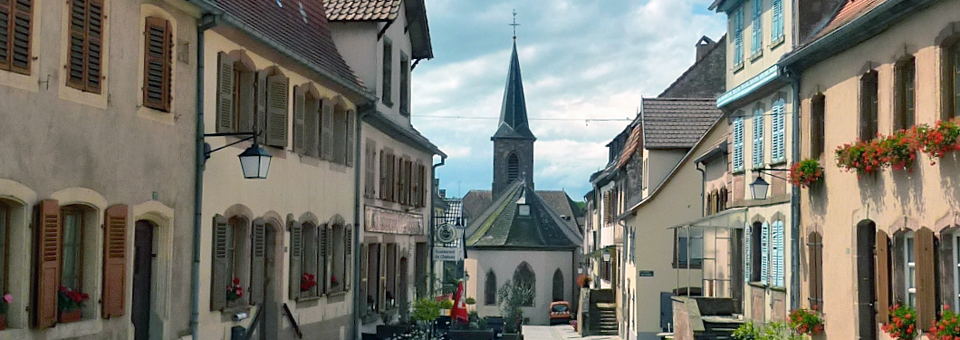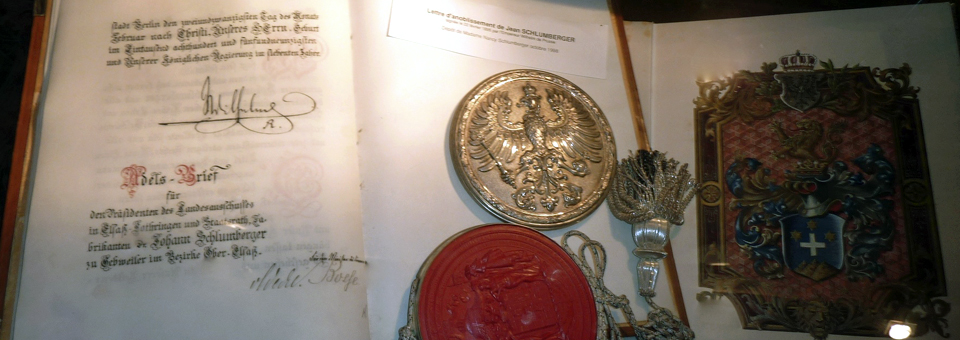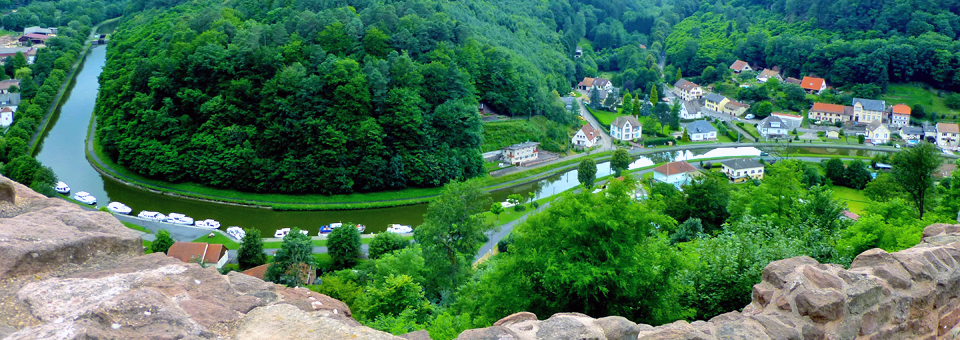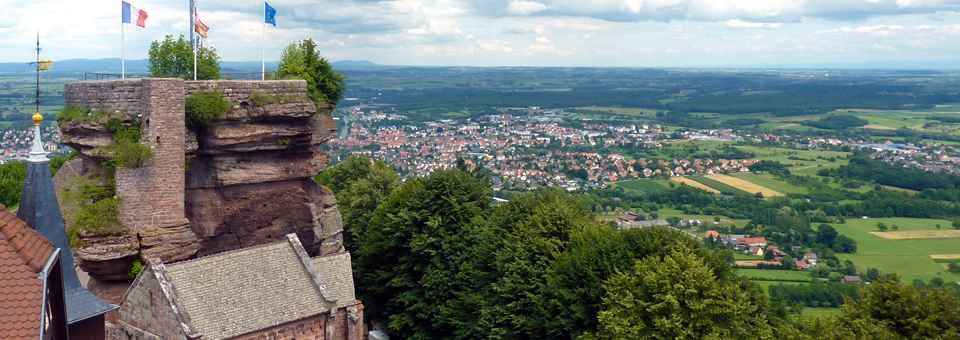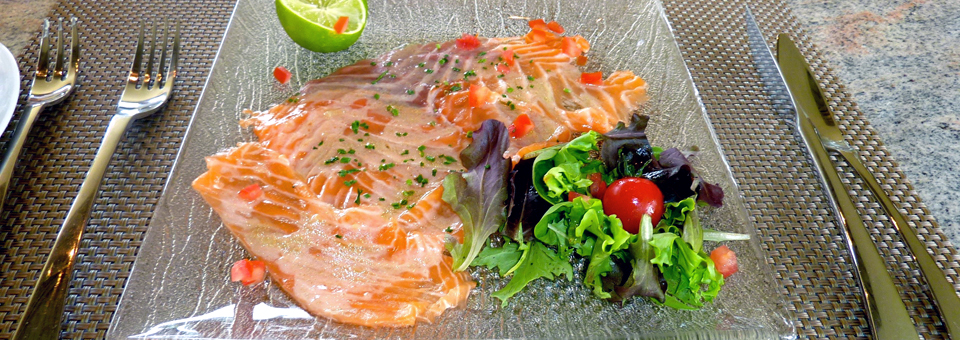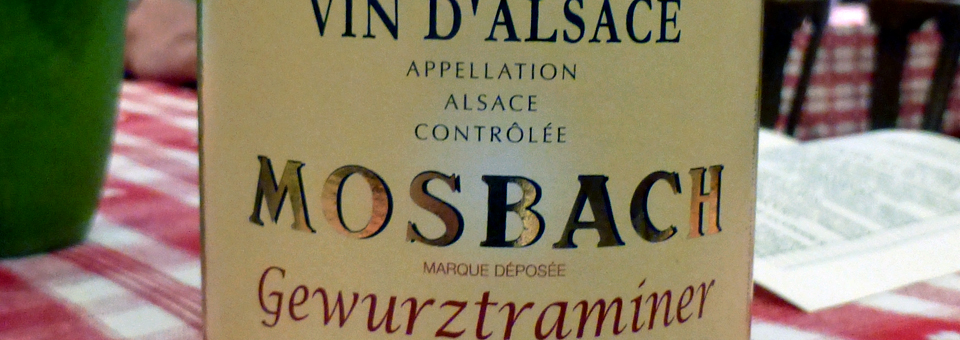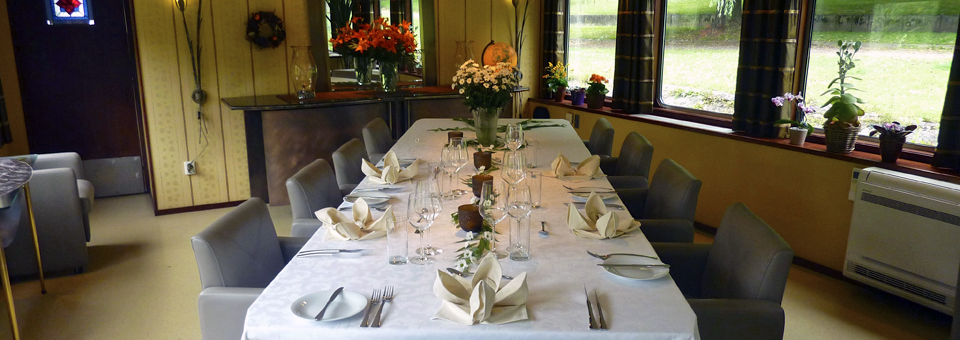Barging in Alsace Lorraine aboard European Waterways’ Le Panache
This summer we celebrated a special birthday with a very special voyage. We booked a barge trip that began and ended in Strasbourg, capital of the Alsace region of eastern France. This beautiful area between the Vosges Mountains and the Black Forest bears a strong German influence because its nationality and language switched back and forth depending on the outcome of a variety of wars.
We arrived a few days before the cruise to relax in the historic region of Strasbourg, a UNESCO World Heritage Site known as Grand Île (Grand Island) for the island formed where the two arms of the Ill River joins the Rhine.
Our favorite area, Petite France, bears little resemblance to its past as a medieval commercial center with foul-smelling tanneries, rampant prostitution, and what was referred to in German as “Franzosenkrankheit”, the “French disease”, treated at the syphilis hospital. The area has been so beautifully restored that families and wedding parties come here to pose for photographs.
The Hotel Régent Petite France is European Waterways’ designated hotel for pickup for the cruise. It is also where notable people like Catherine Deneuve, the musician Sting, and French President Jacques Chirac have chosen to stay.
The interior of the hotel is contemporary chic but the 17th century building has a rich history as a mill and later an ice house. The turbines are intact and visible from the hallway. Glass panels in the lobby overlook a gate still used to regulate the water level for boats passing through the adjacent lock. Surprisingly, 2012 room rates began at only 159€.
This area is so picturesque that we spent our three days simply wandering the winding lanes, browsing the little specialty shops, stopping to see a few museums and churches, and leisurely savoring the hotel’s breakfast buffet. Lunchtime plats du jour at the area’s charming restaurants tended to be around 10€.
We enjoyed Alsatian specialties like Bäckeoffe aux Trois Viandes (three meats, potatoes and onions baked in wine), Coq au Riesling (chicken in wine), and the ubiquitous flammekueche or tarte flambée, (a thin crust topped with cream, bacon, and onions)–foretastes of the fine regional cuisine we would enjoy on the barge.
Evenings, we would savor our finds of the day–local wine, cheese, fruit, perhaps macaroons, nougat, or meringues– and the breathtaking view of the town, lock, and river from our room. With the window open we could fall asleep to the relaxing sound of cascading water, but not before enjoying the sweet treat on our pillows–oeufs de cigogne (chocolate stork eggs) by a local chocolatier.
What is it like to spend a week traveling aboard a barge? It’s the slow route through a region with ever-changing scenery.
Day 1
Our European Waterways captain, Jules, and tour guide, Florian, picked us up at the hotel and drove us to Hesse, where our barge was docked.
There was a welcoming champagne and hors d’oeuvres reception with our four fellow passengers, a mother and daughter from Japan and a couple from Oregon. We met the rest of the crew–Rachel and Julia, the hostesses who served the meals and tended the cabins, Christophe, our chef, and Willy, a fifth generation barge captain.
Le Panache is a Dutch design barge converted to a classic twelve passenger luxurious floating hotel. The sun deck had a large table and chairs, a spa pool, and bicycles for following along the footpaths or exploring the area.
There is a dining room and comfortable living room known as the saloon, as well as books, music, and an open bar. Six staterooms with en-suite facilities are below deck. A Mercedes van for excursions follows the barge.
We had free time before dinner and walked into town. A caretaker invited us inside the church. Even with our limited French we understood his warm welcome and pride in his town, which included ruins of an 11th century Benedictine abbey. Dinner was local specialties–Choucroute Garnie (sauerkraut with three meats), fruits and cheeses, and creme brulée, each course paired with a local wine.
Day 2
Le Panache took us along the Canal de la Marne au Rhin, built in 1853 for transporting cargo. We cruised past wooded areas and enjoyed an elegant candlelight lunch while following underground rivers through two long ventilated tunnels built in 1839 and 1849. One was over 1550’ and the other over 7500’ long.
We stopped at a little church in Sarrebourg to see the magnificent wall-sized window by Marc Chagall and at a museum with ceramics and archeological finds from the region. There was free time to browse the shops, savor elegant pastries at a sidewalk café, and enjoy the bronze sculptures throughout the town.
Before dinner we walked along a footpath past abandoned locks with our barge captain, Willy. He told us about his parents, both born on barges, and how they spent a full day navigating these 17 locks before the boat elevator was completed. Plans for the Valley of the Locks include artists’ studios in the charming old lock keepers’ houses.
Day 3
A unique adventure was in store in the morning when we descended the Arzviller boat elevator and glided down a 422’ slope and the 146’ difference in elevation in just four minutes. First, our barge entered a water tank called a caisson that had wheels on the bottom and watertight panels on each end. Cables pulled the caisson down the slope on rails. At the base of the slope one panel opened, allowing us to enter the Zorn Valley.
We stopped to see a glassblower and had time to buy honey for sale at a lock keeper’s house. We were happy to have an experienced barge captain like Willy to maneuver through narrow locks with little more than an inch to spare on either side and to remind us to duck for low bridges.
Our tour guide, Florian, who grew up in East Germany, drove us to the mountaintop village of La Petite Pierre. Its 12th century castle was fortified by Marechal Vauban, the personal engineer of Louis XIV. We walked the cobblestone lanes and saw documents from the Middle Ages at the Museum of Alsatian Seals. There was a brief shower, but on a cruise like this everything is taken care of. Florian had umbrellas for us all.
A short drive took us to Musée Lalique where we learned about production and history and saw over 500 exquisite examples from the René Lalique collection– jewelry, drawings, glass, and the crystal developed by his children, Marc and Marie-Claude.
This town of Wingen-sur-Moder was also the site of some of the most intense World War II battles. There was a plaque in memory of the tragically defeated American 70th Infantry (Trailblazer) Division and in tribute to the American soldiers of the 274th and 276th “Task Force Herren” Divisions who won freedom for the Alsatians. We climbed steps to a little Catholic church where prisoners of war–8 officers and 256 enlisted men– were quartered.
Florian drove us to , where the barge was docked. There was time before dinner to ride to hilltop castle ruins and to explore the village.
Day 4
We all chose to awaken early in the morning to walk to the local boulangerie-patisserie to taste samples and see our breakfast bread and croissants being made. Then we were off to Saverne, a village that dates to the time of the Gauls. Our canal went right down the middle of the main street and we docked across from the grand 460’ long Château de Rohan, built of red Vosges sandstone for the Bishop of Strasbourg.
We were driven to a hilltop lunch at Château du Haut Barr, the Bishop of Strasbourg’s 11th century castle–the most majestic in Alsace. Our gourmet meal included an assortment of fois gras, fish, veal, salmon, beef, duck, Alsatian wines, and Saverne’s dunkel (dark) beer, Licorne.
We climbed to a valley overlook and stepped inside the 12th century Roman chapel. We returned to the city for a walking tour of Saverne’s historic streets before heading to the barge for a salmon dinner accompanied by salad, cheeses, fruits, and, of course, an abundance of wine. Our day ended with a glowing sunset that highlighted the reflection of the beautiful buildings on the glass-like surface of the canal.
Day 5
We didn’t linger as long as usual at breakfast since it was Saverne’s market day–a social event with local produce, baked goods, meats, preserves, dairy products, clothing and household goods from buttons to mattresses.
Back onboard, we were wined and dined on smoked salmon, roast pork, fruits, cheeses, and sweets with a view of farm fields, cows, and steepled little towns. Picnickers waved as our barge cruised by. We docked by a colorful building with an amusing mural of Hansel, Gretel, and a witch with an Angelina Jolie-style slit dress. Storks were nesting on chimneys.
No trip to the Alsatian wine-producing region would be complete without a drive along the Route des Grands Crus. We enjoyed a private tasting tour at Mosbach Vins d’Alsace in Marlenheim. It’s one of the wine villages of La Couronne d’Or, or Golden Circle, around Strasbourg. We sampled Pinot Blanc, Pinot Noir, Pinot Gris, Riesling, Gewürztraminer and the local plum wine or brandy, Mirabelle. We were served our favorites with dinner.
Day 6
The next morning we docked in Strasbourg and were driven to the busy area where people were gazing up at the 466’ spire and gargoyles of the landmark Notre Dame Cathedral. A grand organ, stunning stained glass, elaborate pulpit, and renowned 59’ high astronomical clock built in 1843 are all inside.
The energetic can climb the spire’s 300 steps to an observation platform. We opted to visit the museums of the adjacent Palais Rohan, built in 1732-42 by the Bishop of Strasbourg. Notable guests include Louis XV, Marie Antoinette, and Napoleon and Josephine.
We returned to the barge for the festive Captains Farewell Dinner. From the fois gras to the fireworks atop the chocolate cake, it was an unforgettable finale to our experience.
Day 7
After a leisurely breakfast we were driven to the railway station, relaxed and refreshed for our trip home.
Food and wine aboard Le Panache:
For more information:
Prices for a 6 night European Waterways cruise aboard Le Panache are from $4,690 per person, including all meals, wines, an open bar, excursions and local transfers. Full boat charters are also available. Barge cruises are also offered in Belgium, Germany & Luxembourg, Holland, Italy, Scotland, England, Ireland and many other regions of France.

